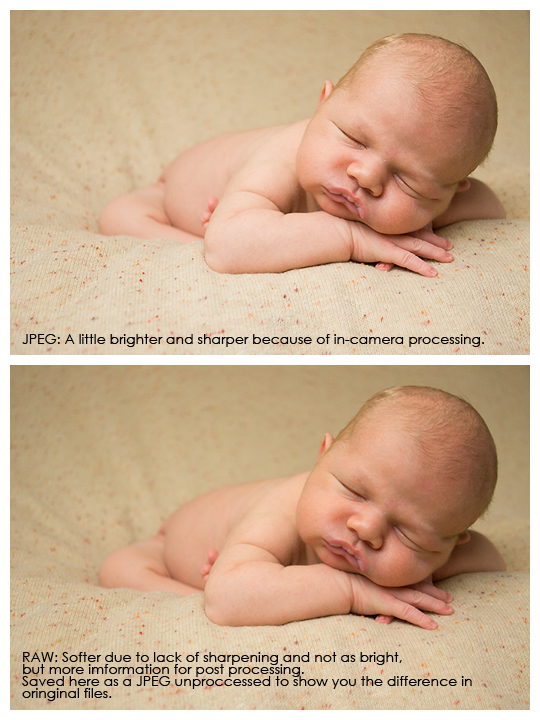17
2013RAW or JPEG? {Free Beginner Photography Class}
If you’ve been perusing other photography blogs, you may have noticed that a lot of photographers sweat by RAW files. So I’m going to take a minute to explain the differences between RAW and JPEG. However, first I want you to hear this: I would not recommend shooting all the time in RAW. If you shoot in RAW, you should have a purpose for doing so. A fear that you might mess up exposure for a very important event or a need to pull out more detail in post processing. That said, let’s explore the differences.
JPEG
A JPEG is likely the file type that you are using on your camera presently. It is a smaller compressed image that is processed in camera to look good immediately.
Pros
- JPEGs can go straight from your camera to your computer to your printer or a website. No editing required. It’s a sort of universal file type.
- JPEGs look sharp and have been brightened/had contrast added.
- JPEGs are smaller (my camera produces 10mb JPEGS)
Cons
- With the JPEG format you only have control over certain things. The camera will sharpen, brighten, add contrast, and a number of other things before compressing the file. You can manipulate how your camera will process a JPEG by selecting Vivid or other color presets in your menu. Check your camera manual for these presets and play around with them. See if you like one over the other.
- JPEGs store less information, therefore, you have less latitude for error.
RAW
A RAW file is uncompressed. When you view it on your computer it will look less bright, sort of fuzzy, and seem to have very little contrast.
Pros
- All that data means you have a lot of room for error. If you miss exposure by about a stop, you can change it in post processing (but there will still be consequences).
- Since the image is unprocessed, you will have full control over the final JPEG
- The file is a digital negative that you use to create your own image
Cons
- RAW files are GINORMOUS. A typical RAW file is 25MB or more. HUGE. And then you still have to process it to make it a JPEG. So if you keep both the RAW and final JPEG that’s 35mb of hard drive space.
- RAW files cannot be printed/placed on the web as is. Every RAW file must be processed in editing software prior to use.
- Learning to edit a RAW file so that it looks as nice as an in-camera JPEG takes a while.
Conclusion
I would totally recommend a beginner photographer shoot everything in JPEG. I’ve recently been kicking myself for not switching my camera back to JPEG mode after shooting a client session in RAW. I really don’t have time to edit each image and save them as JPEG for my own family. However, if you have a specific project or goal that requires more latitude than a JPEG file is capable of handling (for instance a seriously contrasted scene) I would recommend giving RAW a try. It’s worth learning how to use effectively for those times when you want full control, but the totality of the topic is beyond the scope of this class.


